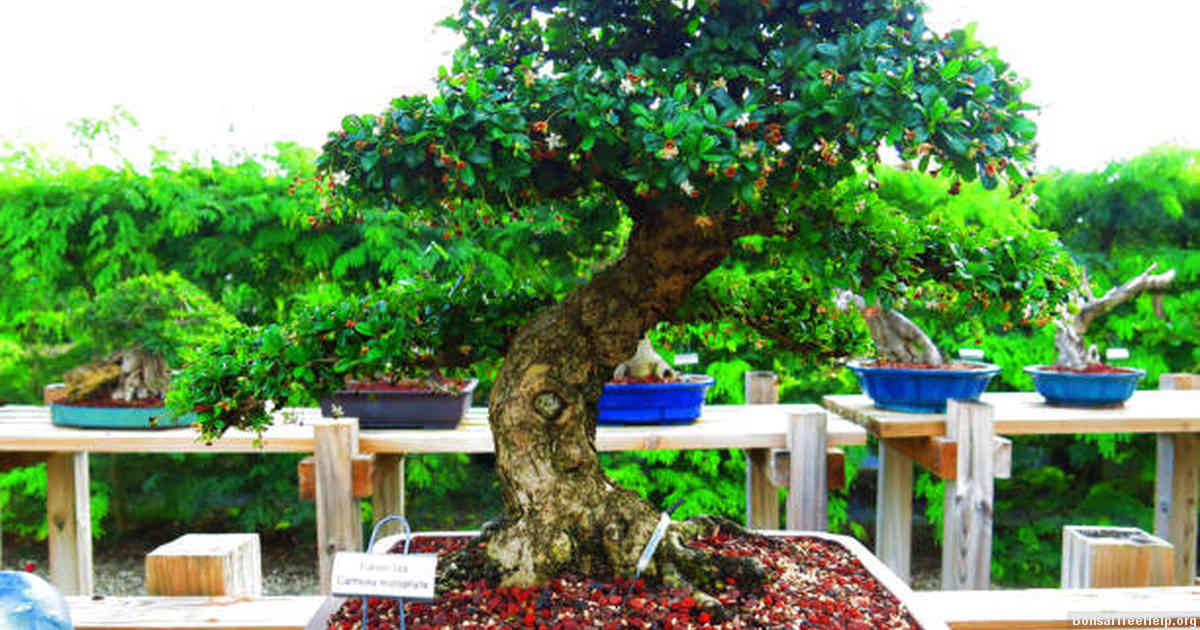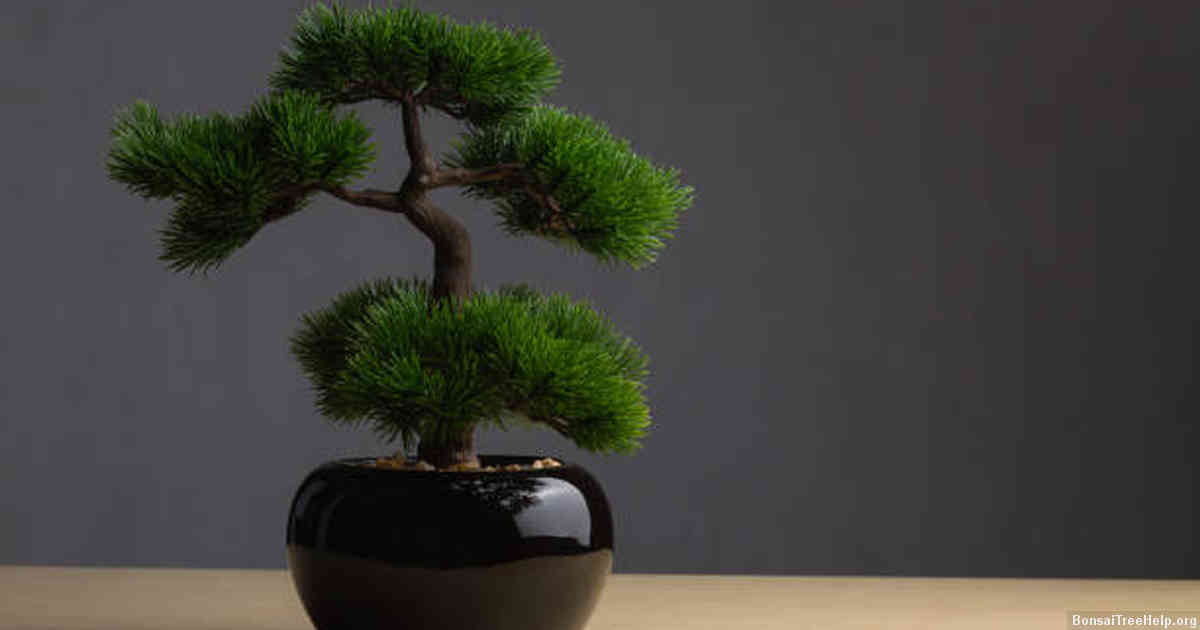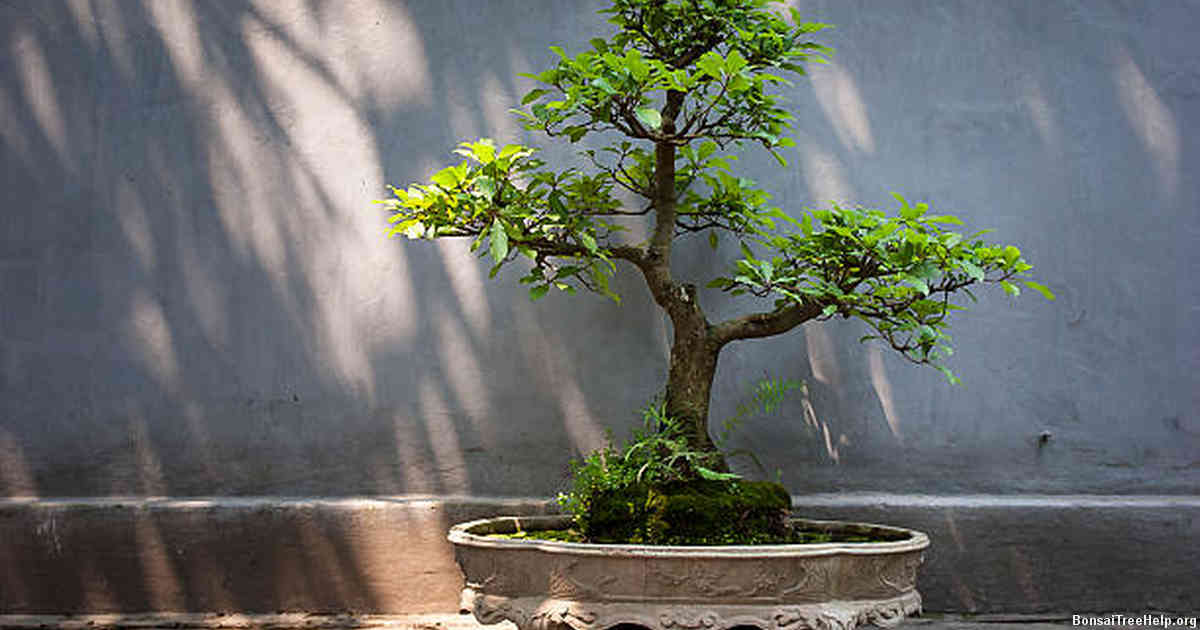
The best time to wire a ficus bonsai tree is in the spring, when it is actively growing. This allows you to use flexible wiring that will conform better to the branches and trunk of your tree as they grow, rather than restricting movement or breaking off branches if wired too tightly. A newly-acquired ficus can be wired immediately, with the understanding that more work may need to be done soon thereafter; it is generally easier to make adjustments with new trees since the root system has not yet been established. Re-wiring should take place every 1-2 years depending on how quickly your tree grows.
Contents:
Why wire a Ficus Bonsai tree?

Wiring a ficus bonsai tree is an essential part of its training process. Not only does it allow the bonsai to grow in the desired shape, but it also helps maintain that shape over time. By using wires to create curves and bends in branches and trunks of the ficus bonsai, you can ensure your tree looks exactly how you want it while also helping promote strong new growth throughout the plant.
Not only can wiring help improve overall aesthetics, it can also encourage thicker growth on thinner or weaker branches. When done properly, wiring helps guide new branch growth into desirable shapes that keep your ficus bonsai looking great for years to come without having to prune as often. Because wire helps position branches correctly from a young age, this leads to stronger wood being created which prevents unwanted breaks when older wood eventually becomes brittle with age.
The proper timing for wiring a ficus bonsai depends on several factors such as the health of the tree and the type of weather conditions present at your location. Generally speaking though, springtime tends to be best since new shoots emerge more quickly during warmer months leading up until early summer when temperatures start climbing too high for comfortable maintenance. Knowing this will ensure your tree gets all necessary attention right at its peak growing season so you don’t miss out on any potential shaping opportunities or mess with natural seasonal cycles unnecessarily.
Different Stages of Wiring

Ficus bonsai trees can require wiring at various stages of their development. When ficus is just beginning to grow, it might need a light gauge wire. This wire should be gentle enough not to girdle the trunk or pinch new buds and shoots. As the tree continues to mature and become more dense, heavier wires may be necessary in order to control branches in an aesthetically pleasing manner. It’s important to keep checking the tension on existing wires as new ones are added – too much tension could cause serious harm by crushing branches.
When it comes time for shaping of your bonsai tree’s foliage, you’ll want to use thin aluminum or copper wiring which will mold easily into shape. It also helps when weaving around smaller thinner twigs that cannot handle any significant weight; this prevents breakage while still allowing you position them correctly without additional damage from adhesives such as wax or glue. Copper wiring is best for deciduous species like Chinese elm due its high malleability and flexibility, though both aluminum and copper are perfectly serviceable for ficus varieties as well – just ensure there’s plenty of slack so that your potential bends have room maneuver without harming living tissue on either side.
Once everything is wired up snugly with loose motion restricted by tight wraps where desired, don’t forget about periodic check-ups throughout each growing season. Young saplings especially aren’t ever fully finished because they continue developing rapidly over time so pay attention if any bud swelling or leaf growth looks odd near the area wrapped with wires; if left unchecked these problems can snowball further down the line leaving permanent damage behind in their wake.
Tools and Materials Required for Wiring

When wiring a ficus bonsai tree, the tools and materials you will need vary greatly depending on the size of the branches you are looking to shape. The smallest branches might require just a pair of flat-nosed pliers, while larger branches may need full sized wire cutters and possibly even a saw or small pruning shears. In addition to these, an assortment of flexible copper or aluminum wires in various sizes should be available for your use. These wires should be at least two thirds thicker than the thickness of the branch being wired so as to provide enough support without causing any damage.
In order to measure and properly secure wires around your ficus bonsai tree’s branches it is important to have access to some sort of ruler or tape measure that can wrap around easily and ensure accuracy when deciding on lengths of wire needed. Similarly, if non-welded clips are going to be used they will also need measuring correctly before being applied; too large a clip could result in major damage with improper placement becoming more common due to inaccurate measurements. Having said this it can still be better practice to opt for welded clips over non-welded ones due simply to their durability and ability not slip during wrapping processes regardless of what material they are made from – such as nylon coated wire with zinc coated clips recommended by experts in this craft form.
Finally there may also be times when certain parts of your wiring project require epoxy glue for extra stability; a resin glue which bonds firmly once fully dried ensuring no risk displacement or shifting occurs on those particularly challenging configurations – where evergreen growth is likely going forward.
How to Wire a Young Ficus Bonsai Tree?

When wiring a young ficus bonsai tree, patience is key. If you’re in a hurry, it might be best to come back when you can give your full attention. Start by selecting the branch or branches you want to wire. If possible, use thick, flexible aluminum wire as it will not cut into bark like thinner wires can. Wrap each branch securely but loosely for two to three turns and make sure that the same pressure is applied all over the branch with each turn of the wire. A good idea is to draw an imaginary line along each branch before wiring so you have a visual guide as to where the wired position should be.
As younger trees may respond quickly and vigorously, try testing the wire after several weeks rather than months since they do not take as long to set shape as larger trees do. It’s important that whatever shape you create adheres in place and does not slip down again with time once everything has been wired up because this will require more frequent re-wiring sessions if adjustments need to be made throughout its growth period which could otherwise result in damage from excessive trimming or cutting of roots and branches due to loss of design continuity from too many re-designs on such delicate plants. After achieving your desired shape, make sure there are no protruding pieces of wire left on any branch by bending them inward away from visible parts of plant foliage or stem ends so accidental scratches don’t cause scarring or further damage caused by careless unwrapping later on down the line during maintenance intervals for grooming purposes or pruning sessions required for better health conditions when necessary over time.
Timing for Wiring an Established Ficus Bonsai Tree

When it comes to wiring a well-established ficus bonsai tree, the best time is during the late winter. Winter offers cooler weather, making this season ideal for successfully wiring and training your bonsai. Young branches are easier to manipulate during this time as they have not started hardening off in preparation for the upcoming growing season.
Gently working with these flexible branches while they are still supple will reduce any potential damage that could be caused by more inflexible ones later on. You can secure wire around thicker areas such as roots and trunks which need extra support so that your ficus bonsai tree does not suffer from its own weight throughout the summer months when it is full of foliage and blooms.
Once wired into place it is important to check how tight or loose the wires were secured throughout springtime. As new growth appears, if too loose then it is likely that those branches may start pointing upwards rather than downwards like previously intended – leading to an overall unbalanced appearance of your ficus bonsai tree in summertime. If too tight then there’s a risk of damaged bark and disfigured branches in autumn due to restricted movement – meaning any progress you made earlier would be undone very quickly.
Precautions While Wiring a Ficus Bonsai Tree

Wiring a ficus bonsai tree can be an effective way to train and style a bonsai. However, when handling the wiring process of your ficus there are many precautions that should be taken in order to ensure the health and safety of your plant.
Before beginning the wiring process, it is essential to make sure that your bonsai has enough energy stored up in its trunk and roots. If not, wait until after your tree has been freshly pruned and repotted before attempting any wiring on it. If you attempt to wire more than 20-30% of the branches then your tree will likely suffer from shock or even death due to over-styling.
It is also important that you monitor the progress of the wires carefully as some ficus trees have very thin bark which can easily become scarred or even peeled off when wired too tightly or left on for too long. In general try to check their tightness every two weeks so that they remain secure but not cause irreversible damage to the tree’s bark. When taking out existing wires do this slowly by gradually loosening them so as not to break off any new buds or leaves that may have grown around them since installation. By taking these simple measures, you will give yourself a better chance of successfully styling your ficus without damaging it in the process.
When to Avoid Wiring a Ficus Bonsai Tree?

Wiring a ficus bonsai tree can help reshape its growth and form, while also helping to maintain the overall health of the tree. There are however times when wiring may not be ideal and should generally be avoided.
You should avoid wiring a new or recently potted ficus bonsai tree. Newly developed roots need time to firmly entrench themselves in their new pot before any type of manipulation is attempted. Wiring at this early stage could cause damage to these fresh roots as well as hamper their progress due to weakened stability. Waiting for between one to three months for your root system to become established will aid with successful styling by providing more support during the wiring process.
It is important that wires do not remain on your bonsai tree for extended periods of time beyond six weeks – which is the approximate maximum recommended time frame – as otherwise wire marks will become permanently embedded into its delicate bark layer. This results in an unnatural look that does not improve over time and can further impact upon leaf production negatively down the line if left unattended too long. Constantly checking in with your trees progress over these six weeks is essential as a result in order to prevent any permanent scarring from occurring when dealing with a ficus bonsai variety particularly.
Aged or unhealthy looking trees should also ideally be kept away from wiring sessions in order ensure they recover successfully first before any manipulation takes place; strong vigorous plants are key when attempting major changes like wiring styles so your ficus bonsai must match that criteria accordingly prior.
Leave a Reply